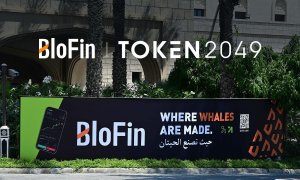Brokers begin to explore NDFs in aftermath of Australian rulings on CFDs
“Only regulated brokers with strong technological expertise and prime broker relationships will be able to enter this market which means that there will be less competition” says FXOpen’s Denis Peganov

Last week, FinanceFeeds reported in detail that Australian authorities had dropped a massive bomb on CFDs in Australia, limiting how they are sold and executed.
The new set of rulings set out by the Australian Securities and Investments Commission (ASIC) include drastic changes relating to CFD provision by OTC derivatives providers, including leverage restrictions, the standardization of CFD issuers’ margin close-out arrangements that act as a circuit breaker to close-out one or more a retail client’s CFD positions before all or most of the client’s investment is lost, protection against negative account balances by limiting a retail client’s CFD losses to the funds in their CFD trading account, and the prohibition of giving or offering certain inducements to retail clients including offering trading credits and rebates or ‘free’ gifts.
This restructure was inevitable, and follows a substantial amount of discourse by ASIC over the past few years, specifically aimed at CFDs and margin FX trading in Australia, the second largest center in the world of CFD providers after the United Kingdom.
In the UK, the absolute home of CFD trading, larger brokerages have been forming lobby groups, specifically aimed to work with the Financial Conduct Authority (FCA) in the UK in order to reach some middle ground in order that the FCA, and the very powerful exchanges in England seeking to out-regulate the OTC sector so that it can get its hands on the retail market without having to modernize in order to compete with urbane electronic trading firms.
Back in 2018, the FCA preceded the action that ASIC has taken, by launching proposals to impose permanent rules for the offering of CFDs to retail clients.
The very same day, IG Group, one of the world’s largest CFD providers in UK and Australian markets shared its response to the regulatory proposals.
“The FCA’s proposals have been anticipated by the Company, and do not change the Company’s expectations on performance or Group revenue”, IG said.
The broker reiterated its support for the objective of regulators to improve client outcomes in the online trading industry and noted that it will continue to engage fully with regulators. IG said it believes that “when proportionate regulation has been applied consistently and appropriately, client outcomes have improved, and compliant providers have benefitted over the longer term”.
An anodyne utterance from IG Group, perhaps aimed at attempting to quell shareholder panic.
Since then, the baiting has not stopped, but nor has the momentum of CFD trading, which is just as popular now as it was before the regulatory persecution started.
These days, FinanceFeeds has noticed an increase in interest in NDFs, an acronym for Non-Deliverable Forwards, which are very popular in the coveted Asia Pacific region, and have seen a revisitation by large financial institutions.
Thus, it makes sense that if brokers were to go down the NDF route, a good alternative to CFDs could be sustained, and the regulators will leave them alone because the banks and institutions use them in huge volumes, unlike CFDs which are the extremely popular darling of the retail OTC electronic trading sector and the envy of the exchanges which cannot compete with them on price, execution speed or practicality, thus have resorted to old school tie lobbying in order to attempt to get the retail business onto exchanges.
Today, FinanceFeeds spoke to Denis Peganov, Business Development Director at FXOpen, a company which has almost 20 years of expertise in the Asia Pacific region from a retail perspective.
Mr Peganov told FinanceFeeds
“We think that offering NDFs is definitely an opportunity that brokers should explore. We didn’t see much interest from our existing clients, however, it can give us access to a different market and different clients. Only regulated brokers with strong technological expertise and prime broker relationships will be able to enter this market which means that there will be less competition” – Denis Peganov, Business Development Director, FXOpen
This is indeed interesting, as perhaps an overlap may occur at first, and eventually current CFD clients seeking greater freedom and less restriction by the Orwellian regulatory approach could join the institutional traders and large entities doing huge NDF volumes daily.
FinanceFeeds believes that South East Asia’s NDF trading is booming. War-torn CFD providers could easily get in on the action as growth of this ignored alternative is absolutely obvious.
Unlike spot FX, an NDF has similar virtues that stand CFDs out as popular instruments, as an NDF is an outright forward or futures contract in which counterparties settle the difference between the contracted NDF price or rate and the prevailing spot price or rate on an agreed notional amount.
This type of trading has garnered its greatest popularity in regions in which forward FX trading has been banned by the government, usually as a means to prevent exchange rate volatility.
In established markets, NDFs were heralded as a means by which OTC FX firms could mitigate the risk of being exposed to, and exposing their retail clients to, sudden and unexpected bouts of market volatility.
Strangely, NDF trading did not catch on to quite the extent that CFD trading has done, with a loyal and dedicated client base in Britain trading CFDs with vigor on a largely domestic market, via established, often publicly listed British electronic trading giants, especially when you consider the global regulatory disdain for CFDs that ensued the disinterest by many FX firms in NDFs.
brokerages looking to onboard strategic partners in Malaysia tend to focus, with a degree of futility, on spot FX and miss out on the NDF opportunity.
In the last year, trading in outright forwards rose by a notable 43% to $999 billion per day. Trading in medium-term tenors for outright forwards is more common than for FX swaps, and 61% of the turnover in outright forwards was in maturities of over seven days and up to three months. The US dollar was on one side of 88% of outright forwards transactions.
Within the various instrument categories within outright forwards, NDFs accounted for a significant share of the increase in trading between 2016 and 2019, reflecting in particular the strong activity in Korean won, Indian rupee and Brazilian real NDF markets.
It is worth a quick look at the Indian Rupee futures contract’s massive prominence on Dubai’s emerging DGCX exchange – it is by far the exchange’s most traded product.
One entity that has raised the subject of importance of NDFs this month is the International Monetary Fund.
Jochen M. Schmittmann and Chua Han Teng produced a full report just last week at the International Monetary Fund stating that Non-deliverable forward (NDF) markets in many Asian emerging market currencies are large, rapidly growing, and often exceed onshore markets in transaction volume. NDFs tend to price significant depreciation during market stress episodes.
The IMF says that spillovers from NDFs to onshore markets are a policymaker concern. IMF analysis shows that influences tend to run both ways after controlling for differences in timezones between markets. Policy approaches to NDFs vary widely across Asia from close integration with onshore markets to severe restrictions on NDF trading.
So, whilst NDFs are not without their limitations, they are likely to be less of a target due to their massive influence at the top tier of the institutional market and at interbank level.
And let’s be fair, its the top tier market makers, banks, exchanges and institutions that have what is rather cornily known as ‘skin in the game’.









